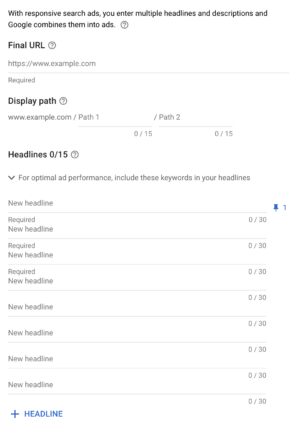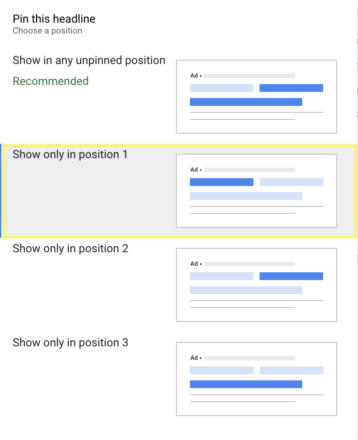Google Ads: Responsive Search Ads
The clock is ticking closer to the end of Expanded Text Ads in the Google Ads platform. Here’s how you can best prepare your Google Ad accounts before the calendar hits June 30, 2022.
For the uninitiated, Google announced in Fall 2021 their plan to phase out an integral part of their advertising platform—Expanded Text Ads—to make way for a shiny new automated version—Responsive Search Ads. Of course, an announcement of this magnitude was met with mixed opinions from the general Google Ads community. On the one hand, it’s yet another step by Google to reduce the level of control advertisers have over their messaging. On the other hand, according to Google, one of the benefits of Responsive Search Ads is to make our lives as advertisers “easier” with automation.
Regardless of the feelings and opinions of the advertising community, Google has delineated June 30, 2022 as the final day to create or edit new or existing Expanded Text Ads. Note that Expanded Text Ads will continue to serve alongside Responsive Search Ads and will continue to appear as part of reporting as well.
What Are Responsive Search Ads?
Generally speaking, Responsive Search Ads (RSA) are the Google Ads answer to automating the advertising process. The difference between Expanded Text Ads (ETA) and Responsive Search Ads is that rather than creating three headlines and two descriptions for Expanded Text Ads, Responsive Search Ads allow for up to 15 headlines and four descriptions. These assets are then shown in any order based on their relevance to a searcher’s query.

Responsive Search Ads Best Practices
To ensure that you’re ready for the Expanded Text Ad cutoff, be sure to complete this checklist prior to June 30, 2022.
- Export a report from each account to discover which ad groups need Responsive Search Ads.
- Click the “Ads & Extensions” tab on the left in your selected Campaign
- Click the box to select all ads below the filter icon
- Click the “Download” button on the right-hand side of the interface and then select the file type you wish to export
- Open the file in your spreadsheet software of choice, be it Microsoft Excel or Google Sheets
- Add a table to your report and filter for ad groups without a Responsive Search Ad
- Voila!
- Create one Responsive Search Ad per ad group. Google allows as many as three Responsive Search Ads per ad group.
- Optimize each Responsive Search Ad to include a minimum of:
- 8-10 headlines consisting of relevant keywords terms and at least one call to action
- Three descriptions that include a keyword or two to increase ad strength
- An ad strength score of “average” or higher
- If ad groups have two Expanded Text Ads already created and running, these headlines and descriptions should automatically port over to the Responsive Search Ad during creation.
- Review high-performing Expanded Text Ads to effectively create high-performing Responsive Search Ads.
- Utilize the “Pin” feature that allows you some control over the positioning of certain headlines and descriptions to appear in ads.
- Example: Pinning a headline in position #1 means that all ads will contain this asset in position #1 when Google serves your Responsive Search Ad.
- The jury is out on the effectiveness of pinning headlines and descriptions. We recommend creating campaign experiments to test if they’re right for your campaigns.
- Keep in mind that pinning does restrict the number of ad combinations Google is able to serve, which goes against the automation of Responsive Search Ads as a whole.

Google RSAs: Don’t Panic!
There’s still time before the June 30, 2022 deadline. Make sure you and your campaigns are doomsday prepped and set up for success in Google’s bold new future.
See you on the other side!
